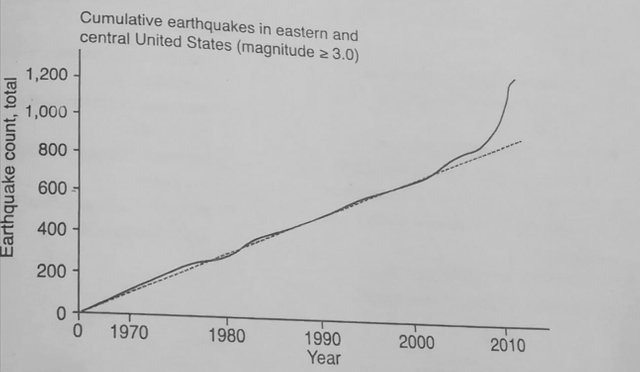To call it a fractious debate is an understatement.
Hydraulic f racturing, or fracking, wrenches open rock deep beneath the Earth's surface, freeing the natural gas that’s trapped inside. Proponents argue that frackingrelated gas recovery is a game changer, a bridge to the renewable energy landscape of the future. The gas, primarily methane, ischeap and relatively clean. Because America is brimful of the stuff, harvesting the fuel via fracking could provide the country with jobs and reduce its dependence on foreign sources of energy.
But along with these promises have come alarming local incidents and national reports of blowouts, contamination and earthquakes. Fracking opponents contend that the process poisons air and drinking water and may make people sick. What’s more, they argue, fracking leaks methane, a potent greenhouse gas that can blow up homes, worries highlighted in the controversial 2010 documentary Gasland.
Fears that fracking companies are Operating in aWild West environment with little regulation have prompted political action. In June, the group Don’t Frack Ohio led thousands of protesters on a march to the Statehouse, where they declared their commitment to halting hydraulic fracturing in the state. Legislation banning the process has been considered but is now on hold in California. To call it a fractious debate is an understatement.

Hydraulic f racturing, or fracking, wrenches open rock deep beneath the Earth's surface, freeing the natural gas that’s trapped inside. Proponents argue that frackingrelated gas recovery is a game changer, a bridge to the renewable energy landscape of the future. The gas, primarily methane, is
cheap and relatively clean. Because America is brimful of the stuff, harvesting the fuel via fracking could provide the country with jobs and reduce its dependence on foreign sources of energy.
But along with these promises have come alarming local incidents and national reports of blowouts, contamination and earthquakes. Fracking opponents contend that the process poisons air and drinking water and may make people sick. What’s more, they argue, fracking leaks methane, a potent greenhouse gas that can blow up homes, worries highlighted in the controversial 2010 documentary Gaslcmd.
Fears that fracking companies are Operating in aWild West environment with little regulation have prompted political action. In June, the group Don’t Frack Ohio led thousands of protesters on a march to the Statehouse, where they declared their commitment to halting hydraulic fracturing in the state. Legislation banning the process has been considered but is now on hold Despite all this activity, not much of the fracking debate has brought scientific evidence into the fold. Yet scientists have been studying the risks posed by {racking perations. Research suggests methane leaks do happen. The millions of gallons of chemical-laden water used to fracture shale deep in the ground has spoiled land and waterways. There’s also evidence linking natural gas recovery to earthquakes, butlthis problem seems-to stem primarily from wastewater disposal rather than the fracturing process itself. While the dangers are real, most problems linked to fracking so far are not specific to the technology but come with many large-scale energy operations employing poor practices with little oversight, scientists contend. Whether the energy payoff can come with an acceptable level of risk remains an open question.
Hydraulic fracturing operations have been linked to some small earthquakes, including a magnitude 2.3 quake near Blackpool, England, last year. But scientists agree such earthquakes are extremely rare, occurring when a well hits a seismic sweet spot, and are avoidable with monitoring. Of greater concern are earthquakes associated with the disposal of fracking fluid into wastewater wells. Injected fluid essentially greases the fault, a long-known effect. In the 19603, a series of Denver earthquakes were linked to wastewater disposal at the Rocky Mountain arsenal, an Army site nearby. Wastewater disposal was also blamed for a Magnitude of 4.0 quake in ohio.